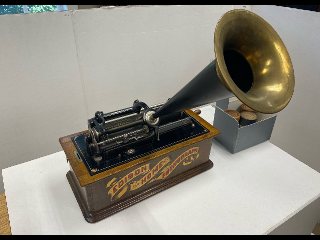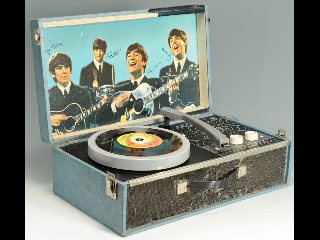The Birth of the Record Player
The history of vinyl records begins with the invention of the phonograph by Thomas Edison in 1877. This revolutionary device could record and replay sound, a concept unheard of at that time. However, it was Emile Berliner who, in 1887, took Edison’s invention a step further by developing the gramophone, which used flat discs or “records” to play music.

These early records were made from shellac, a material that was both brittle and heavy. Then, in the 1930s, RCA Victor introduced the first vinyl long-playing record, known as the LP. This was a game-changer in the music industry. It was lighter, less breakable, and could hold more music.
The Golden Age of Vinyl

The 1960s and 1970s marked the golden age of vinyl records. This was the era when legends like The Beatles and The Rolling Stones released their music primarily on vinyl. Records were the dominant format for music distribution, and record players were a staple in every household.
I still remember the first time I listened to Pink Floyd’s “Dark Side of the Moon” on my father’s turntable. The rich, organic sound, the crackles in between tracks – it was a truly immersive experience.
The Rise and Decline of Digital Music
However, with the advent of cassette tapes and then CDs in the 1980s and 1990s, vinyl records saw a significant decline. These new formats were portable, durable, and offered a ‘cleaner’ sound. The rise of digital music in the late 1990s and early 2000s, with platforms like iTunes and later Spotify, seemed to signal the end of vinyl.
Digital music offered convenience and accessibility. You could now carry your entire music library in your pocket and stream any song at any time. But this convenience came at a cost – the loss of the tangible, tactile experience of listening to music on vinyl.
The Vinyl Revival
Surprisingly, in the mid-2000s, vinyl began making a comeback. Record sales started climbing again, and by 2016, they reached a 25-year high. This resurgence has been driven by a mix of nostalgia, sound quality, and the physical experience that vinyl offers.
Today, we’re experiencing a vinyl revival. Music lovers are returning to records for their superior sound quality and the intimate experience they provide. There’s something profoundly satisfying about sliding a record out of its sleeve, placing it on the turntable, and gently dropping the needle onto the groove.
Wrapping Up: The Timeless Appeal of Vinyl Records
Despite the rise of digital music, vinyl records have proven their enduring appeal. They offer a listening experience that’s tactile, immersive, and deeply personal. Whether it’s the nostalgia, the ritual, or the rich sound, there’s no denying that vinyl has a certain magic that digital formats can’t replicate.
As we look to the future, it’s safe to say that vinyl records aren’t going anywhere. They’ve survived the test of time and continue to bring joy to music lovers around the world.
So, what’s your vinyl story? Do you remember your first record? Or maybe you’ve recently started building your vinyl collection? Share your experiences and tips in the comments below. Let’s keep the vinyl conversation spinning!
For more information on the history of vinyl records, visit Vinyl Engine.
